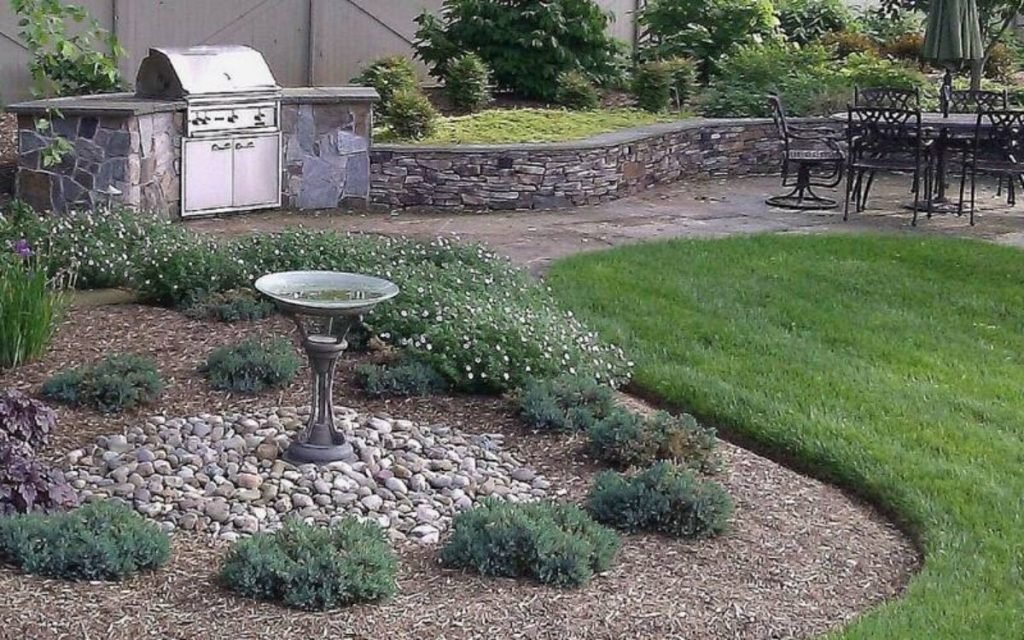Gardening is a healthy hobby that offers respite from the demands of everyday life. It’s also a great way to get some exercise and eat fresh fruits, vegetables, and herbs.
However, when you’re busy with work and other responsibilities, it can be hard to find the time to maintain your landscape. Thankfully, there are plenty of low-maintenance landscaping ideas that will keep your garden looking its best without much fuss.

1. Plant with the Season in Mind
For those with busy schedules, landscaping is often the last thing on their mind. So, it’s important to consider low-maintenance plants that are easy to care for.
Planting with the season in mind will help you choose flowers that will bloom at their best during a particular time of year. For example, planting crocus or daffodils in fall will provide color during the winter and early spring.
This will make the entire landscape look cohesive, even if it is comprised of different types of plants. In addition, it will avoid a situation where plants are competing for the same resources.
It’s also a good idea to use plants that are adapted to your area. These native species will be easier to care for than ones that aren’t suited to the climate of your home. They can grow without a lot of irrigation and will tolerate dry soils as well.
2. Don’t Be Afraid to Replace Plants That Don’t Work
Gardening is an activity that can help keep your body and mind active, improve your nutrition and make you feel more relaxed. In addition, gardening helps you save money and time, which can lead to a better work life balance.
To create low-maintenance landscaping, it is important to pick plants that are well adapted to your location and climate. This will reduce your need for pesticides, fertilizers, and watering.
Another way to reduce maintenance is to avoid overplanting in the garden. This is because overplanting can take up too much space, making it more difficult for plants to grow to their full potential.
You should also choose plants that don’t need a lot of water, such as hydrangeas or shrubs. They are great choices for people who are busy and don’t have a lot of time to spend on their gardens.
3. Pick Plants That Don’t Need a Lot of Water
Many busy people find it hard to find time to tend to their garden. Between jobs, children, and other life obligations, it is easy to let things fall by the wayside.
Luckily, there are lots of plants that thrive on little maintenance. These plants make great additions to your landscape.
Perennials are a perfect choice because they will continue to grow and bloom year after year without much fuss. Some even reseed themselves!
Native plants, which are local to your climate and soil, are another low-maintenance option. They require less water and fertilizer because they have deep root systems that are adapted to the conditions in their area.
Some perennials, like pasqueflower and penstemon, are also drought-tolerant. They will not only look beautiful, but they will also help to save your garden from excess watering.
4. Choose Plants That Are Easy to Care For
Gardening is a great hobby and often helps people escape from their hectic work schedules. But it can also be a stressful and time-consuming activity if your plants are prone to overgrown weeds, pests, or disease.
That’s why it is important to choose plants that are easy to care for. That way, you can spend more time enjoying your garden instead of spending time tending to it.
A few of the easiest to maintain plants include wildflowers, perennial herbs, and shrubs that grow from runners. These are the ideal plants to add color and interest to your landscape.
For a low-maintenance perennial that provides year-round color, try beautyberry (Vaccinium uliginosum). These hardy shrubs feature lilac blooms in spring and summer, and they produce a profusion of gorgeous purple berries during fall and winter.


